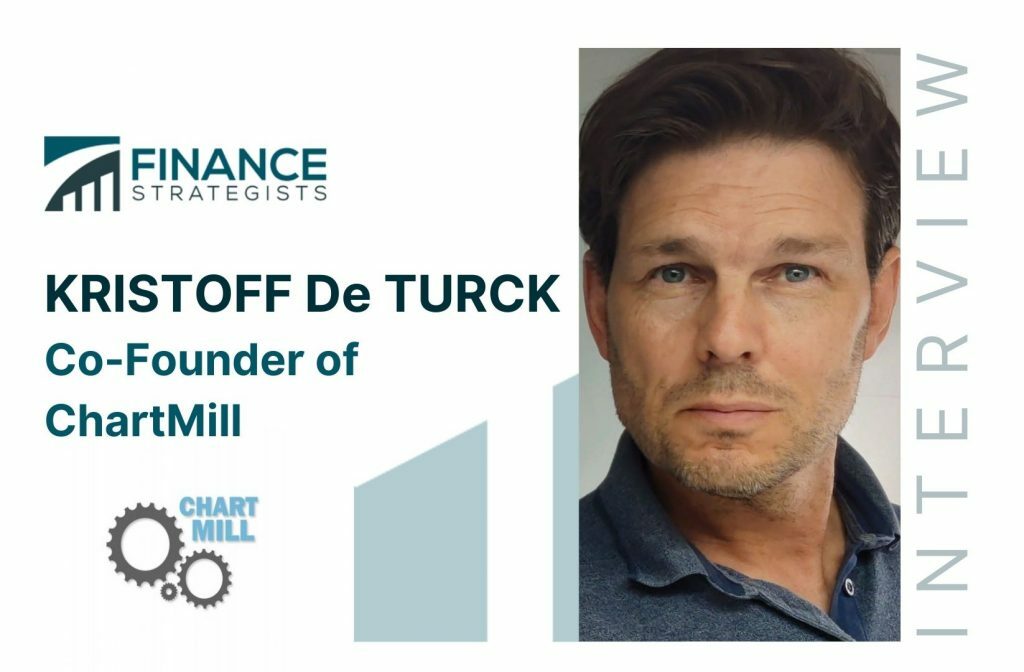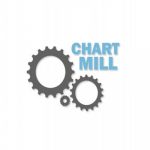Success leaves clues. Finance Strategists sat down with KRISTOFF De TURCK, co-founder of ChartMill. He shared his thoughts on the past, present, and future of the company, as well as the insights he has gained from running the business. Q: Who are you and what’s your background? I am Kristoff, one of the co-founders of ChartMill and living in Oosterzele, a municipality in East Flanders, Belgium. Before ChartMill, I was employed for many years as a chief inspector/detective in a local police zone where I mainly dealt with cybercrime issues. For a long time, I did ChartMill next to my regular job but when I finally saw the opportunity to be involved full time I didn't hesitate for a moment. As with many things in life, sometimes you just have to take the plunge. Q: Who has been your biggest influence, and why did they have such a significant effect on you? I was interested in all aspects of the stock market at a fairly young age but, like so many others, I also did a lot of things wrong. Those have been expensive lessons. Fortunately, I have always learned something from them. One particular investment book has helped me enormously in the search for my own strategy which is a combination of both technical and fundamental analysis. Stan Weinstein's Secrets For Profiting in Bull and Bear Markets. The different market phases in the book for analyzing indices and individual shares from a price point of view were a real eye-opener for me. They brought structure and calm, allowing me to keep an overview of the bigger picture. In volatile markets such as the one we are faced with nowadays, this is essential to avoid making hasty decisions that you may regret afterwards. Q: Knowing what you know now, what advice would you have given your younger self? Above all, don't be too influenced by what others think or say but go your own way. This does not mean that you should be reckless or disregard good advice. What I want to say is that there is no problem or challenge for which there is only one possible way of acting. The end result may be the same but the way you handle it is entirely up to you. I always try to do it in the way that feels best to me, even though sometimes that may not be the fastest or most efficient way. But it will be the one that gives you the most satisfaction. Q: What is ChartMill? ChartMill was founded in 2008/2009 and has since grown into a solid financial analysis tool for the American, European, and Canadian markets. Currently, we monitor more than 22,500 shares daily. In-depth screening and analysis are possible on both a fundamental and technical basis with our own technical and fundamental rating system. The software allows you to accurately search for stocks and ETFs that meet your set criteria. Q: What separates ChartMill from its competitors? Perhaps the biggest difference is the fact that ChartMill was created out of a need of its own. The people behind ChartMill have been actively involved in investing themselves for many years, and that experience offers a great advantage when developing a screener. In theory, a screener seems quite simple. You just process a whole bunch of data for which you provide some filtering possibilities. But the reality is completely different. You can provide thousands of technical and fundamental filters but they must also have some practical use of course. Not the filtering possibilities in themselves but the added value for those who use the screener should be the focus. I would also like to highlight the combination capabilities of technical and fundamental filters. That is something quite unique to ChartMill. ChartMill started as a technical analysis platform but has in the meantime been expanded with detailed fundamental data and filtering possibilities that are quite unique. For example, we offer EPS and Revenue estimates filtering possibilities for the next 5 years. From the beginning we have chosen to take a thorough approach to the integration of fundamental data, we absolutely wanted to avoid adding FA filters just for the sake of it. Q: What led you to start ChartMill? When we started developing the screener in 2008, our main premise was that it should effectively add value when searching for stocks and analyzing them. Our experience at that time was that we never fully succeeded with the screeners that existed at the time. Anyone who invests himself will undoubtedly know that searching the large pond of shares can be a very time-consuming activity. Saving time was one of our main motives to develop our own screener. A screener allows you to work much more efficiently and objectively as a result of which the outcome is much more in line with what you initially had in mind. It also prevents you from being satisfied too quickly during a manual search with stocks that 'more or less' match. Q: What has the experience of building the business taught you? As an investor, you need to be prepared for multiple situations, you should never just assume that something that is successful today will be so tomorrow. This is equally true when using the stock screener. In a typical bull market, a breakout screener will produce successful setups in many cases. But once the market trend changes you will need to adjust your strategy as well. For example, today's highly volatile market conditions are the ideal breeding ground for day traders and highly active swing traders. In such a market environment, specific mean reversion strategies and associated screeners will produce better results that are much more in line with the general market situation. This also applies to the pure fundamental investor, by the way. The typical growth stocks are getting hit hard today. This offers opportunities for long-term investors, but when screening candidates, the financial health of these companies must first be thoroughly examined. The times of unbridled growth based on almost free money are behind us. Companies that have weak balance sheets are facing challenging times. So it's important to tailor the use of the screener to what the market dictates. In a sense, by the way, this is done to a considerable extent by the screener itself. Returning to the example of the bull market and breakout filters, when the stock screener barely produces any breakout setups over a certain period of time, that is an important indication that that same bull trend is losing momentum significantly. Q: Where do you see things headed for you and the company in the next five years? We are now fully focused on the further development of our fundamental data and screeners. The roadmap for 2022 includes the implementation of a full-fledged and high-quality DCF model (Discounted Cash Flow model) in our screener. From the feedback and questions we received, we also came to the conclusion that the stock screener with all its filtering capabilities can seem a bit overwhelming at first use. Therefore we started a video series in which we explain all the possibilities step by step and which allows users to get started quickly. This was experienced as very positive and so we will certainly continue to pay attention to this. Furthermore, the 'trading ideas' section on ChartMill will gain in importance and will therefore be developed further. As I already pointed out in the previous question, it is important for investors to be able to react quickly to changing market conditions. The trading ideas center offers the possibility to quickly find and use screens for specific strategies. This can be based on the timeframe on which one trades or on the type of strategy. Quality is always the primary concern. Every day we receive questions to include specific markets or just to add that one filter and, of course, we understand all these individual questions but choices have to be made. ChartMill has a considerable group of loyal users. This is primarily due to the fact that the quality of the screener comes first, not by haphazardly adding bells and whistles that hardly help anyone. To continue to grow that group, we will make deliberate and focused decisions, both in terms of expanding the capabilities and continuously improving and adapting existing screens. For more information, visit chartmill.com.
Introduction
Who is KRISTOFF De TURCK?
Business

True Tamplin is a published author, public speaker, CEO of UpDigital, and founder of Finance Strategists.
True is a Certified Educator in Personal Finance (CEPF®), author of The Handy Financial Ratios Guide, a member of the Society for Advancing Business Editing and Writing, contributes to his financial education site, Finance Strategists, and has spoken to various financial communities such as the CFA Institute, as well as university students like his Alma mater, Biola University, where he received a bachelor of science in business and data analytics.
To learn more about True, visit his personal website or view his author profiles on Amazon, Nasdaq and Forbes.













